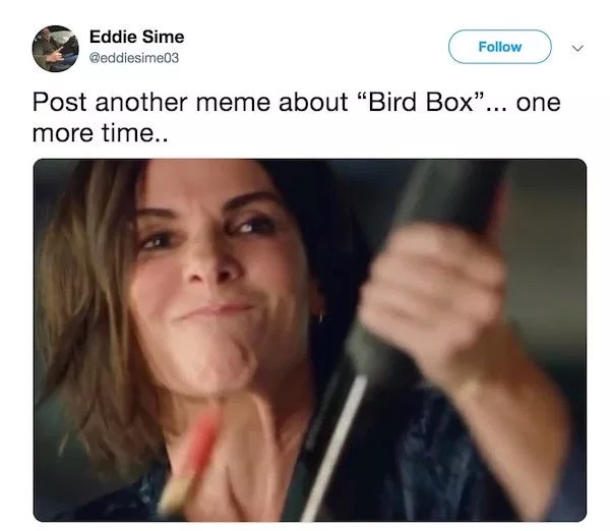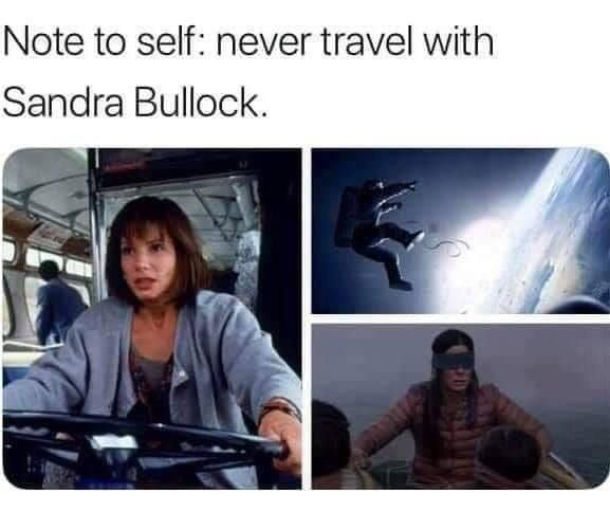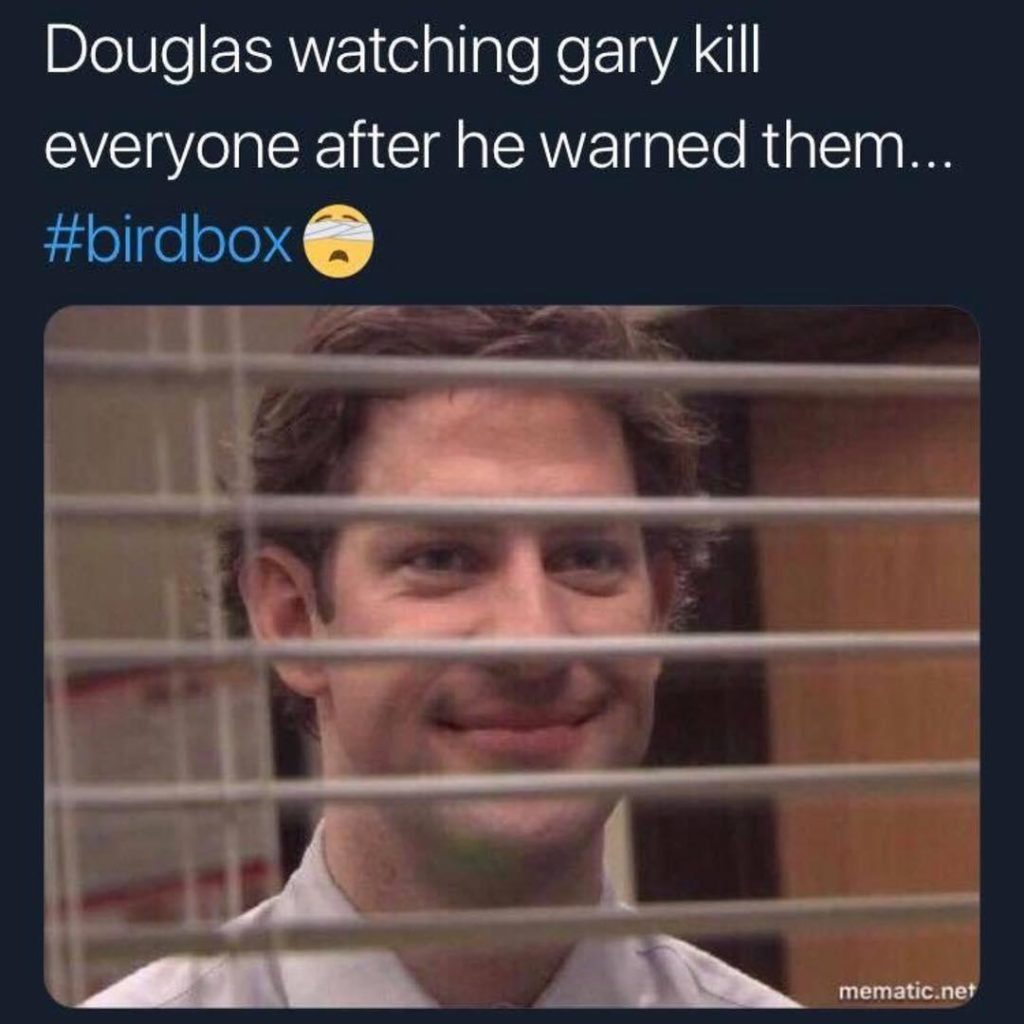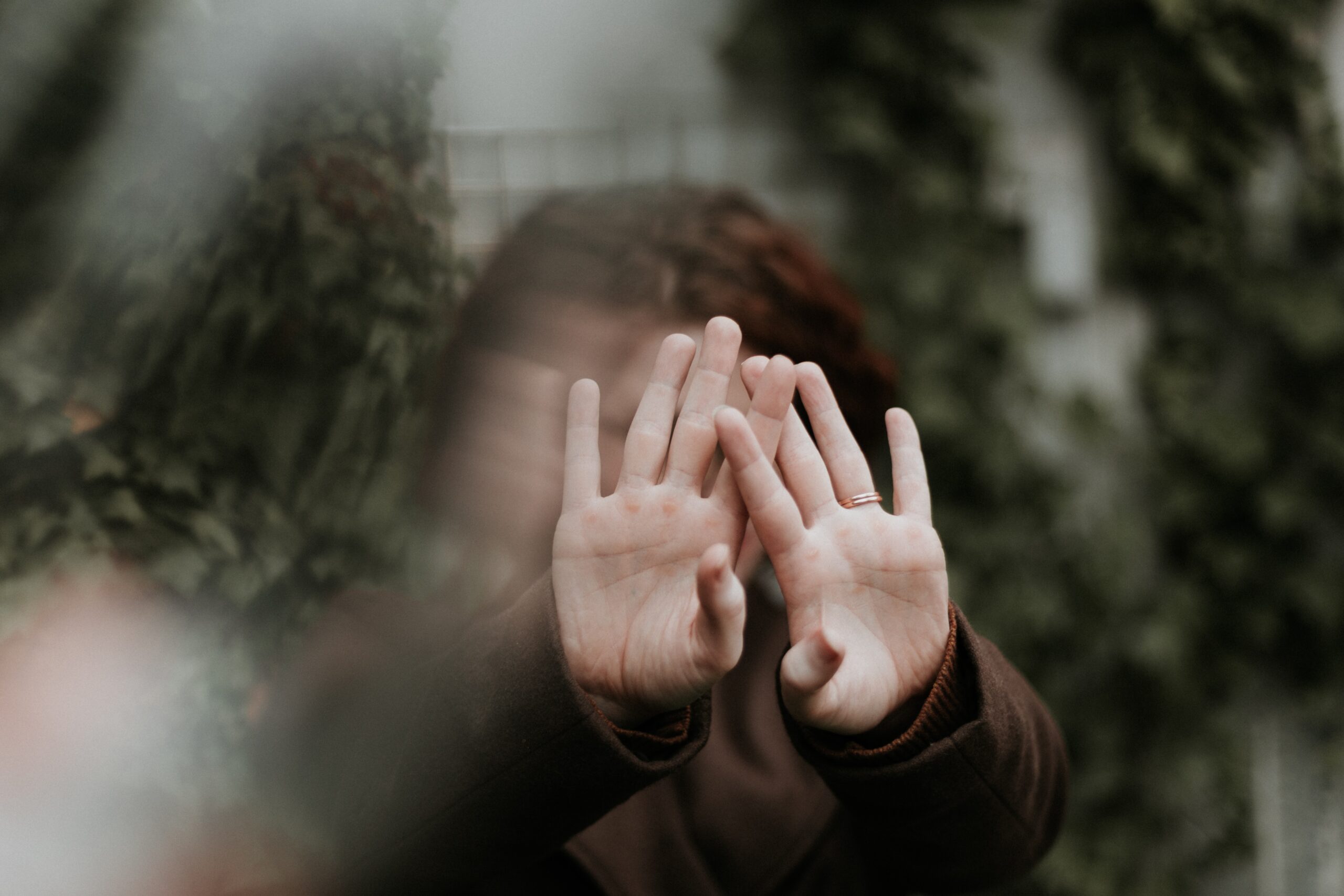Day 6: Movie Review
Today’s blogging challenge is to review a favorite movie from 2018. My choice was released just before the new year, and it hit home hard.
You’ve probably heard of a little Netflix gem called Birdbox, yeah? I mean, in the first 7 days it was out, some 45 million people watched it.
So I’m chilling at the a-p-t when the BFF messages me and tells me he’s watching Bird Box. He wants to see what all the fuss is about. That, and get all the memes.
Well, hell. Now I gotta watch it too so we can chat about it.

Confession: I’d seen articles about how the movie addressed the topic of mental illness. I’d thought avoiding it was the best course of action for someone who’s, well, mentally ill. Turns out it was really great, for me, but… If you haven’t seen it yet, read about the triggers before pressing play.
Potential spoiler material ahead.
What Had Happened
There are plenty of plot reviews online, so I won’t go too far down that rabbit hole. I think Bullock’s great in everything she does, and I wasn’t disappointed here, either. Her character, Malorie, is focused and witty in sharp, sarcastic ways.

The movie hits the ground running. A pregnant Malorie (Bullock) stands painting in her home. Her sister, Jessica (played by Sarah Paulson), is bringing over groceries and the two are jabbing at one another in a lovingly snide fashion when the camera cuts to a television buried behind a sea of canvases. It’s news footage broadcasting updates on the epidemic levels of mass suicide spreading across the globe.
Jessica (Paulson) is there to pick up Malorie (Bullock) and take her for a prenatal checkup. As they head down the hospital corridors toward the exam room, Malorie sees a woman on her cellphone, completely engrossed. As you’re watching, you may not know the how, but you know it’s about to go down.
Appointment’s great. We learn Malorie isn’t too much interested in being pregnant, and we’re introduced to her doctor who tries to get her on board with this whole idea that she’s procreating. It’s not taking.
On the way out of the hospital, Jessica and Malorie pass “cellphone woman” who is now smashing her head into the glass walls and bleeding out, phone still in hand. Malorie immediately realizes the suicide epidemic has hit the States.
On their way home, Malorie is trying to get Jessica to get moving, but people are “turning” all around them, and they’re driving their cars into one another and finding other ways to off themselves. It’s kinda gruesome. Malorie ends up taking cover in a house with strangers and the battle for survival begins.
A Quick Peek
Granted, I don’t watch a lot of movies to have a vast basis of comparison, but I enjoyed the dialogue and interaction between characters. Once you buy into the theoretical plot, you can pretty much commit to this new world order. What starts to happen, though, at least for me and some others I’ve spoken with, is something quite real and hard hitting.
The “enemy” in Bird Box is a force of sorts, unseen on screen. Characters “see” it, whatever it is, and they are driven into madness and immediately commit suicide (often in horrific fashion). The survivors sort that you can’t look at “it,” hence the blindfolds.
The motley group of survivors huddles in the house for safety, but eventually have to get out for supplies. In doing so, they run into a person who doesn’t need a blindfold to move around, and of course, the questions start flowing. The first thing you hear is that the guy (known to another character) was always a little “crazy.” Ah. I see what you did there.
The more time passes, the more people like this we run into, and we learn they want to find “normal” survivors and force them to open their eyes and see the “enemy,” the monster. They’re like doomsday prophets in a way, I guess. This is where the social commentary gets divided.
There are plenty of people who chastise the portrayal of the mentally ill in this movie, as they are depicted as the harbingers of death or the minions of evil. Some critics say that while the movie didn’t set out to “villainiz[e] mental illness,” the lack of sensitivity still causes harm to our national conversation on mental health.
The Paradox
What got me was watching the “immune” characters, the ones who were able to walk around without blindfolds. On the one hand, I completely agree with the take that the mentally ill were at least in some way demonized, but at the same time, the message hit a little close to home.
Because the mentally ill are often misunderstood, there’s this stigma around a “disease” that can’t be seen. We look normal, after all. Sickness is sickness, though, and beyond the precursory opinion of some that a disservice had been done to this social group, there’s a sense of comfort and resonance for those of us who struggle.
My empathy for the mentally ill survivors in this flick grew as I watched. I’m totally Team Malorie, but the raw joy they each portrayed in finally finding a sense of twisted peace got me. To see these “crazy” characters doing everything in their power to get the “sane” characters to open their eyes was profound to me. Desperate. Please. Understand.
And it’s a beautiful thing to see that understanding come to life on the screen, even in such a tragic way. This is the shadow side of the illness to me. It’s what happens when you don’t get help, when you can’t find your way through the darkness.

And Then, Meltdown.
I’m overly empathetic and sensitive to this stuff, and the feeling of someone pretty decently recreating a plot-appropriate version of the crap storm that’s in my head half the time was oddly comforting. But as the last 20 minutes of the story unfolded, so did I.
There’s a scene in a forest. Malorie and the kids are blindfolded and trying like hell to save themselves as the voices in the trees taunt them, lie to them, and try to convince them to look around. Emotions are high and nerves are shot, and the sound crew just nails this scene. As the voices grow louder, frenzied, and overlapping, the cacophony from the screen breaks through the noise in your head. I lost it.
At what seems like the last minute, Malorie and the kids find the sanctuary and she starts pounding on the door. Please just take the children. Door opens and everyone pours in and when it’s safe to take the blindfolds off, we realize they’ve joined a refugee community that’s been established in an old school for the blind.
Poetry.

Featured Photo by John Moeses Bauan on Unsplash




